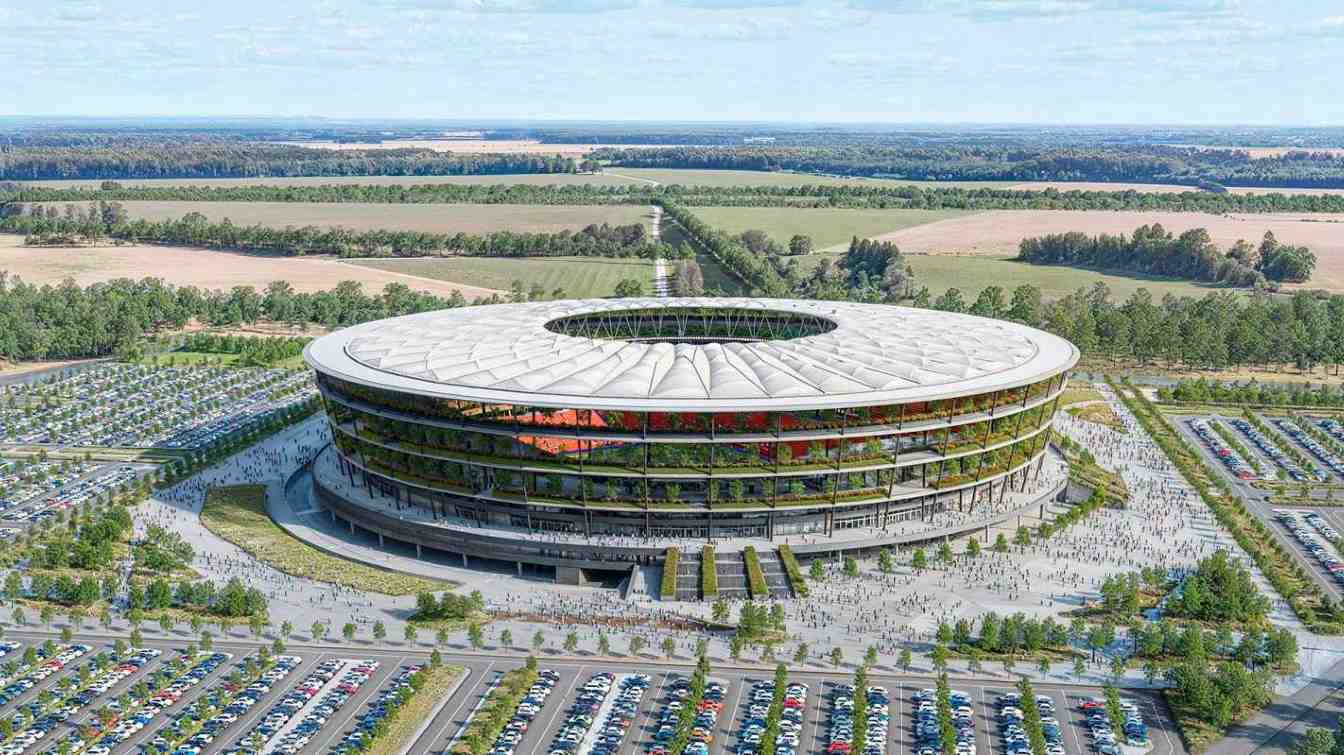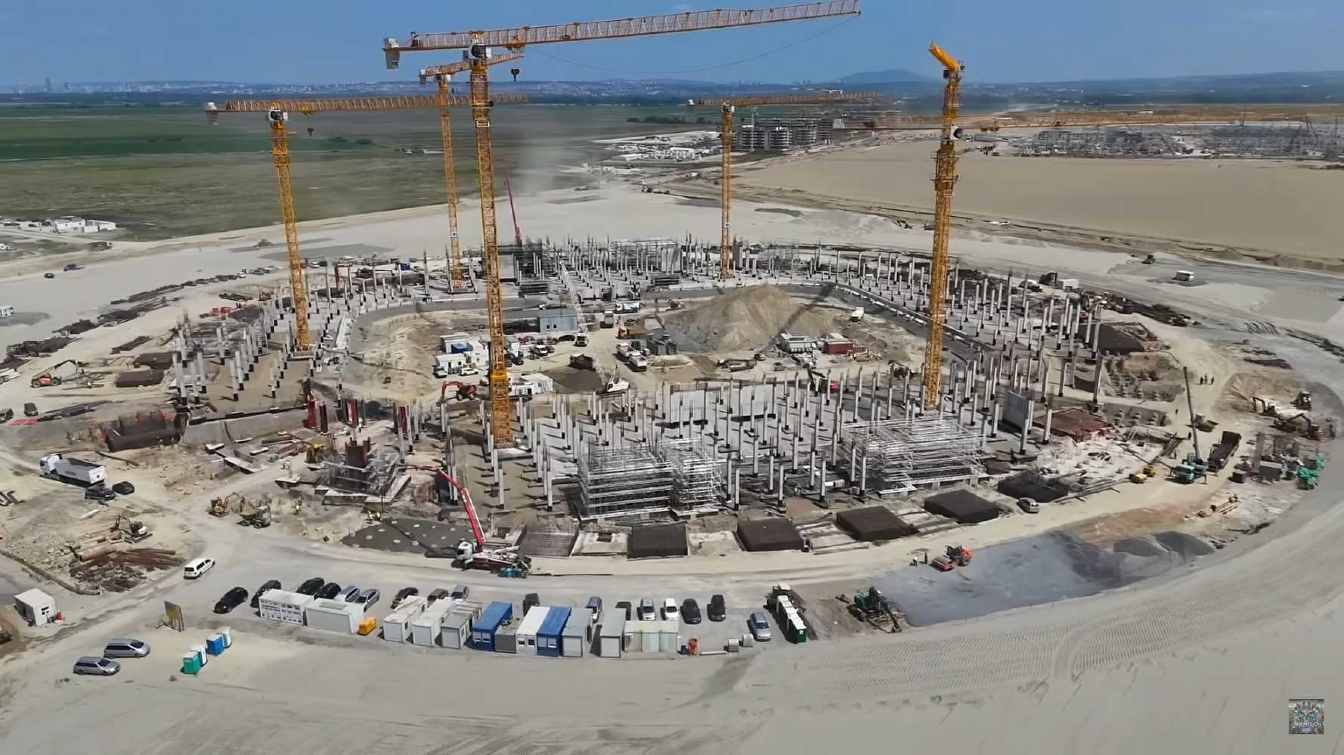Serbia: Serbian national stadium project in the shadow of crisis and resignation
source: StadiumDB.com; author: Paulina Skóra
 The sudden resignation of the director of the most important public project in Serbia — EXPO 2027 — points to serious problems or misunderstandings among decision-makers. What happened that made Dušan Borovčanin, the former head of EXPO, decide to leave this key undertaking?
The sudden resignation of the director of the most important public project in Serbia — EXPO 2027 — points to serious problems or misunderstandings among decision-makers. What happened that made Dušan Borovčanin, the former head of EXPO, decide to leave this key undertaking?
Advertisement
Delays in stadium construction
Problems became apparent when, at the end of April, Serbian President Aleksandar Vučić announced a four-month delay in work on the National Stadium. He stated they plan to make up two months during summer by working three shifts, and now they are looking for a way to make up another two months to be ready for the grand opening. At the time of these declarations, at the end of April, only 0.16% of the planned budget for this year was allocated to the stadium. By the end of June, this figure rose to 0.21%, while the completion of all infrastructure projects reached 23.05%.
Professor Nenad Ivanišević from the Faculty of Civil Engineering in Belgrade, although not directly involved in the project, confirms the existence of problems: Less than 1% of the work on the stadium has been done.
He notes that initial works are usually cheaper than final ones, so the percentage of funds spent does not always reflect the progress, but without a schedule it is difficult to assess the real state.
New director, new hopes
Danilo Jerinić was appointed to replace Borovčanin and has different experience than his predecessor. Borovčanin took the position of EXPO director at just under 33 years old, with limited experience in large projects. Jerinić, on the other hand, previously managed operations at the EXPO company and organized key areas such as exhibition design, construction, space management, logistics, and event management systems. The differences between the managers are noticeable, and Jerinić has a chance to speed up the project implementation.
The capital of the EXPO 2027 company increased from one million dinars to 35 million euros within a year, and the full amount was paid just seven weeks before Borovčanin’s departure. However, works are being carried out without all required permits, which additionally hampers the pace of realization. President Vučić emphasized that the people responsible for signing documents have concerns, especially after the recent tragedy in Novi Sad.
 © Fenwick Iribarren Architects
© Fenwick Iribarren Architects
Will they make it on time?
Besides the stadium, 31% of the planned budget was used for the construction of EXPO 2027 facilities, and about 24% for land acquisition. The value of completed construction works dropped by more than 10% in the first quarter of 2025, due to the transfer of funds from other projects to EXPO.
The official website Serbia2027.gov.rs states that the stadium, although not officially part of the exhibition, is to be ready by the end of 2026 and accommodate 52,000 spectators. Construction started in April 2024, but the permit for the first stage was issued only in August of the same year. The EXPO residential complex, planned for 3,500 residents, is to be built near the exhibition, and a new railway line connecting Zemun Polje, Nikola Tesla airport, and the EXPO site is also planned.
Approved environmental assessment — not without remarks
The Ministry of Environmental Protection approved the environmental impact assessment, although four remarks were submitted, including from professors at the University of Belgrade and the RERI organization. These concerned sewage management and the potential impact of construction on the drinking water intake in Belgrade. Problems include the low level of protective soil layer above groundwater and lack of details regarding foundations and aquifer protection. Furthermore, the sewage drainage system planned in Batajnica is still in the concept phase and is expected to be completed only by 2031. In the meantime, sewage is to be directed to the existing infrastructure in the Blok 45 district. The decision to approve the environmental study can be challenged within 30 days.
Exceeding the scope of work?
The Ministry of Finance obtained permission for preparatory works and foundations in August 2024, when the environmental assessment was not yet required. However, available recordings suggest that the scope of work exceeded the approved stage. Forbes Serbia inquired with the Ministry of Construction about permits for further works, but the response did not confirm their issuance. Currently, an active application submitted on July 10, 2025, is under consideration in the CEOP database.
Advertisement
 StadiumDB
StadiumDB